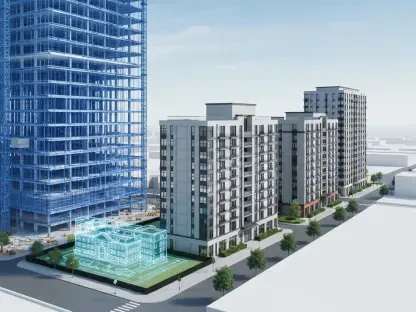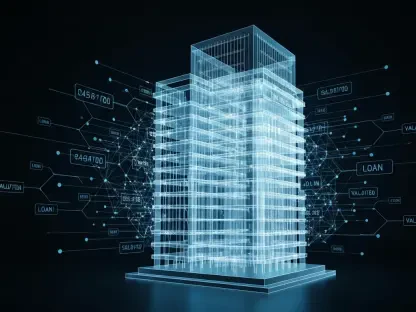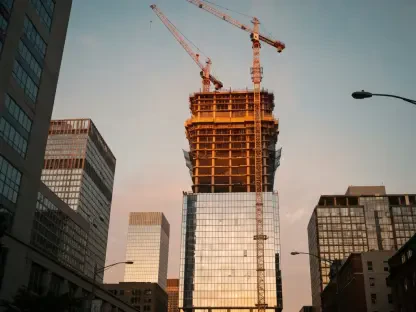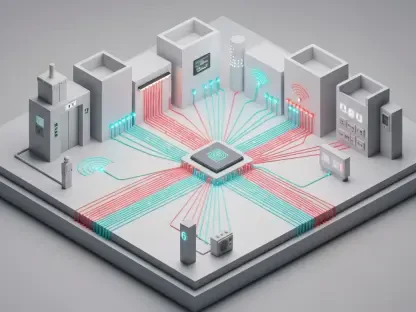The global affordable‑housing crisis isn’t a shortage of ideas but a failure of production. In many markets, building supply has lagged far behind demand, pushing rents and prices out of reach. One expert notes roughly 70% of global housing demand falls into the “affordable” category, yet traditional on‑site construction remains slow, weather‑dependent, and fragmented.
Off-site methods promise to flip the script: By fabricating components in factories, modular and prefabricated homes can dramatically cut the calendar and cost of a project. Studies find modular projects complete 20–50% faster, with only 5% waste and 95% of units delivered defect‑free. The question is not whether prefab works in principle—it does—but whether the industry can scale it to make housing both abundant and affordable.
This article unpacks why traditional construction struggles to deliver affordable housing at scale, how prefab and modular methods can address those gaps; where the real challenges to adoption lie, and what practical steps industry leaders can take to industrialize housing delivery globally.
Why Traditional Construction Can’t Keep Up
Across the U.S., Canada, and elsewhere, housing stock has failed to keep pace with population growth. In the U.S., for example, the supply‑demand gap grew by 3.1 million homes from 2015 to 2022, even as half of all renters already spend more than 30% of their income on housing.
Conventional building practices—crews forming concrete, framing walls piece by piece—are simply too slow and disjointed to bridge this gap. As one report observes, relying on “century‑old” methods means “the clock is running out to solve the crisis”. In effect, the industry is chronically under‑building: one analysis shows household formations far outstrip completions year after year. Globally, leaders note “every housing project seems unique”, yet the demand landscape is not: most homes share common elements. This mismatch—bespoke methods for a mass‑market problem—leaves millions in need without a home, and families cost‑burdened by housing that’s simply too expensive.
That’s where industrialized approaches like prefab and modular step in, offering a fundamentally different production model.
Prefab and Modular: What’s the Difference
“Prefab” covers several off‑site techniques—panelized walls, mass‑timber frames, and volumetric modules, but all involve factory‑made components assembled on-site. A modular home, specifically, is built as 3D sections at a factory, then stacked on a permanent foundation at the site. Crucially, these are real houses, not mobile trailers: once assembled, they are indistinguishable from site‑built units and fully owned real property.
For example, panels (pre-cut wall or floor sections) might be trucked in and erected in days, while a modular apartment building could be delivered in large chunks. By contrast, “manufactured” homes (mobile homes) are designed to be movable and usually depreciate over time.
In short, prefab/modular housing means industrialized construction: design, materials, and even finishes are prepared in controlled plants, then installed on-site.
But understanding the definition isn’t enough—the real question is whether these methods deliver measurable commercial advantages.
The Business Case: Faster, Cheaper, Greener Housing
For builders and developers, off-site methods offer a compelling return on investment, especially when scaled. Multiple analyses show double‑digit time savings: factory construction can reduce schedules by 20–50%. Faster builds mean less finance and overhead expense (every month saved cuts carrying costs), and it means faster occupancy and cash flow. Cost savings are also significant once volumes rise. A U.S. case study found off-site multifamily construction can trim 20% off total project cost versus on-site builds. In practical terms, one report calculates that a 2,000 sq ft. unit built modularly might save $100K–$150K at scale (the hard‑cost per square foot falling from $250 to $200). Even after accounting for extra transport or factory overhead, projects often net 10–15% savings per unit, which can make or break thin‑margin affordable projects.
Quality and sustainability are additional upsides. Factory conditions curb weather delays and defects, and some modular firms now report over 95% defect‑free delivery rates. Waste is slashed too: off-site processes let builders order just the needed materials and recycle scrap efficiently, cutting construction waste by up to 50%. Energy performance often improves as well, since modules are air‑sealed and inspected more rigorously in the factory. The net effect is greener, more predictable housing. In fact, one comparative study shows modular homes produce roughly 22% fewer carbon emissions per unit and only 5% material waste, versus 100% and 10–15% respectively for traditional builds.
Finally, prefab methods can relieve labor constraints. In the face of a skilled‐trade shortage, factory line workers require less specialized training. A Canadian analysis noted mass‑timber panels “can halve the number of workers needed” on a project, cutting timelines about 30%. Likewise, modular construction requires roughly 30% fewer on-site skilled hours. Firms that embrace prefab can schedule crews more efficiently (or redeploy them to other tasks) rather than managing large on-site teams all year.
In sum, the modular value proposition is clear: compressed schedules, better quality control, lower waste, and leaner labor, all of which translate into higher project certainty and lower effective cost per unit.
Yet even with these strengths, scaling prefab is not automatic; systemic obstacles still slow adoption.
Overcoming Obstacles to Scale
The flip side is that prefab doesn’t magically happen—it must be built into business and regulatory processes. Today, most jurisdictions still review prefab projects as if they were ordinary builds, leading to delays. Nearly 40 U.S. states delegate off-site factory approvals locally, meaning a single modular project might need dozens of county inspections en route.
This fragmentation literally slows the promise of speed. If lenders and owners don’t adjust schedules, the cash flow gap hobbles projects. Finally, industry inertia and perception remain barriers. Many developers and tradespeople have never run a factory line, and some buyers still associate “modular” with cheap trailers. As one analyst warns, without coordinated investment in manufacturing hubs and a shift in mindset, prefab will stay niche.
In fact, specialists often summarize the challenge as five bottlenecks: limited factory capacity, financing risk, inconsistent regulation, underdeveloped supply chains, and cultural resistance. Each must be addressed in turn. For example, mass deployment will require dozens of large‑scale factories (hundreds of millions in capital)—not just a few pilot plants. Exporting panels and modules also strains logistics: highways and rail must handle outsized loads, and key inputs (like engineered lumber, fixtures, and floor trusses) need to be stocked to feed all those plants. Without these elements, the efficiency gains of prefab can be eroded by bottlenecks.
For leaders serious about breaking through, the next step is turning prefab into an operational playbook.
Steps to Industrialize Housing Delivery
For firms determined to unlock prefab at scale, here are practical steps to get started:
Define the Business Case. Quantify your housing shortfall and cost pressures. Use benchmarks to model the upside. Frame this in financial terms (lower contingency needs, faster lease-up, etc.) so executives see the opportunity.
Map Standardized Modules. Identify housing types with repeatable layouts (typical unit sizes, amenity stacks, etc.). Design a “product core”, a library of modular floorplates or volumetric units, that can be mass‑produced. These standard designs ensure each project reuses the same components, yielding manufacturing learning curves.
Build or Partner for Production. Invest in factories or partner with established modular builders in your region. Each large factory can output 1,000–2,000 homes per year. Cluster plants near dense markets to minimize transport.
Streamline Permitting and Policy. Engage with authorities to adopt clear off‑site construction standards (e.g., ICC/MBI 1200 series) and fast‑track approvals. A notable example: Oakland revised its zoning to allow taller modular buildings, so developers aren’t penalized by extra floor thickness.
Secure Prefab-Friendly Financing. Align your funding strategy to the new cash flow pattern. For instance, look for government grants or loan guarantees that cover upfront factory costs. Similarly, bulk procurement agreements or public anchor-buyers can assure banks and justify early draws on loans.
Integrate Digital Workflows. Leverage BIM and cloud tools to connect all phases. Use site surveys and GIS (“GeoBIM”) so that civil constraints (geotechnical data, utilities, etc.) feed into the factory’s mode—avoiding late surprises. Implement structured issue‑tracking (RFIs, change requests) linked to modules. Push updated plans and schedules to tablet dashboards on-site in real time; if foremen always have the latest drawings and tasks, prefab accuracy won’t decay in the field.
Strengthen the Supply Chain. Line up your vendors for volume. Commit timber, steel, and component orders at scale. Industrialized carpentry needs just‑in‑time delivery of CLT panels, trusses, HVAC units, kitchens, and more. Consider backward partnerships (e.g., financing a local CLT mill) to assure materials.
Market Your Modular Advantage. Treat prefab capability as a competitive edge. Showcase completed modular projects in pitches and RFQs. Offer factory tours to demonstrate quality. Publicize metrics like reduced cost per square foot or carbon per unit to appeal to both investors and community stakeholders.
Taken together, these steps position prefab as a strategic capability.
Prefab Expertise as a Strategic Differentiator
The writing is on the wall: owners, funders, and governments are starting to demand industrialized delivery. Just as integrated data streams are becoming table stakes in project bids, so too is the ability to deliver fast, certain outcomes. U.S. and Canadian policy plans now explicitly call for modular building to lower costs and speed housing supply. Leading developers and investors are positioning themselves for this shift.
There is no single silver bullet to the housing crisis, but prefab and modular have become key solutions. The technology and policy environment now exists to ramp up production of homes the way other products are made. After decades of fits and starts, a global cohort of builders is finally demonstrating that prefabricated housing can be done at scale.
In short, modular is rapidly becoming a key to solving affordability. The firms that master it will not only build houses faster, but also protect their bottom line and help close the shelter gap at scale.









